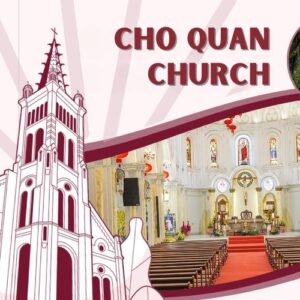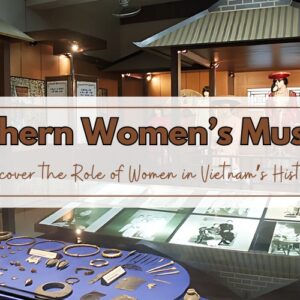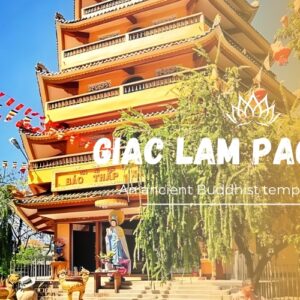
Nestled in the heart of bustling Ho Chi Minh City lies a timeless sanctuary: Cho Quan Church. This sacred haven, a fusion of history and architecture, invites both the devout and the curious traveler to explore its rich history and intricate design. On this article, you will discover the fascinating nature of Cho Quan Church, from its origins to its role as a cultural landmark in modern tourism.
General information about Cho Quan Church
- Address: 120 Tran Binh Trong, Ward 2, District 5, Ho Chi Minh City
- Opening hours: 5:00 am – 11:00 am and 1:00 pm – 9:00 pm daily
- Entrance fee: Free
Cho Quan Church or the Basilica of the Sacred Heart of Jesus, located on the bustling street of Ho Chi Minh City is a remarkable testament to the city’s architecture, spirituality, and history. The appeal of Cho Quan Church lies not only in its ornate architecture but also in the stories hidden within.
Dating back to the 18th century, it is one of the oldest Catholic structures in the city. It has undergone many renovations and restorations, adapting to the changing landscape while still retaining its own unique features. This iconic church is more than just a religious site; it is also a living link to the past, offering pilgrims and tourists the opportunity to immerse themselves in the rich history and culture of Ho Chi Minh City.
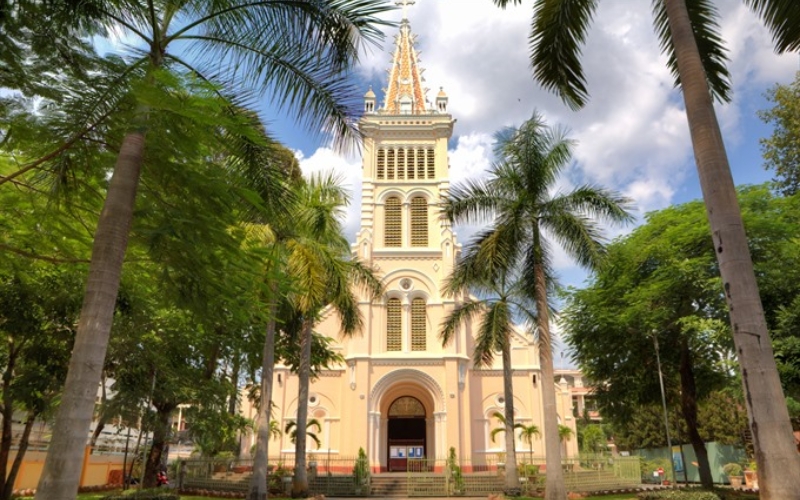
Cho Quan Church
> > > After visiting Cho Quan Church, continue your journey through the rich history and vibrant culture. From colonial landmarks to bustling markets and scenic river cruises, our Ho Chi Minh City tours will help you experience the best of the city.
History of Cho Quan Church
Cho Quan Parish
The history of Cho Quan Parish is closely linked to the expansion of the Nguyen Dynasty’s influence in the southern regions of Vietnam. In the late 17th and early 18th centuries, a large number of parishioners, mainly from Central Vietnam, migrated to the South to escape the old regime and famine. With the desire to start a new life, they gathered in a village called Xom Bot. After a while, a bustling market sprang up, providing countless stalls to serve the daily needs of the local people. This market, called Cho Quan, later became the name of the surrounding neighborhood.
Cho Quan Parish was officially established in 1722. During this time, pastors came to guide the Catholics. By 1725, the parish had about 300 members. The missionaries faced enormous challenges in their missionary efforts due to social conflicts and anti-Christian policies of the feudal government at that time. In the early days, Cho Quan Parish was disbanded several times but despite these disruptions, the Parish managed to regroup and grow, becoming the vibrant community it is today.
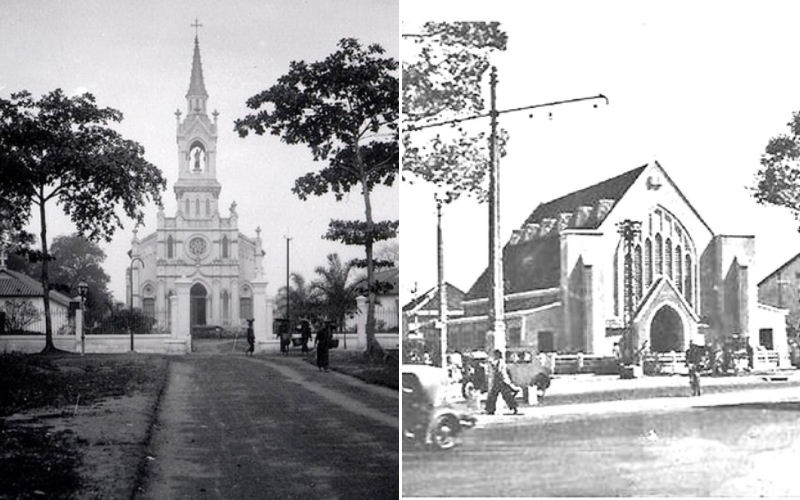
Cho Quan Parish in the past
Construction of Cho Quan Church
The original Cho Quan Parish Chapel was built in 1674. It was not until 1723 that Jesuit priest Emmanuel Quitaon arrived and converted the chapel into a church. However, the church had to be rebuilt many times due to natural disasters and human destruction. Then in 1882, Father Nicola Hamm began building a new church. This project lasted 14 years, with six priests, and was completed in 1896. This is also the last church structure still visible today. To commemorate his contributions to the construction of the church, after his death, Father Nicola Hamm was buried in Cho Quan Church, next to the altar of the Virgin Mary.
What to see at Cho Quan Church
Structure of the church
With a total area of nearly 17,000 m², the parish church includes a nave, a bell tower, a 12-room catechism house, a meeting room, a changing room and a reading room, all of which are arranged harmoniously and beautifully to bring a sense of relaxation and comfort to parishioners as well as visitors. Cho Quan also has many related works, such as a public elementary school, a hospice and a yard and garden with many trees.
Currently, Cho Quan Church has a charity clinic managed by the Red Cross of District 5. In addition, the church also has a community activity place for local people, such as jogging, morning exercise or enjoying the fresh air in the park in front of the church.
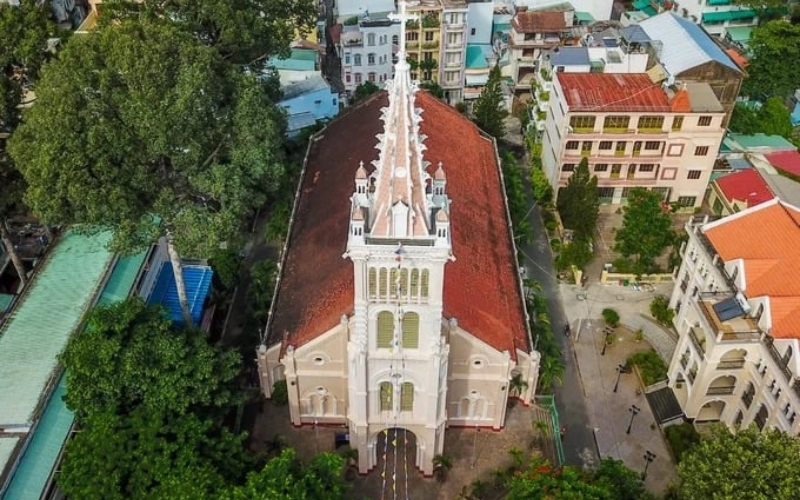
Aerial view of Cho Quan Church
The architecture of the church
Outside
Overall, you will see the characteristic Gothic architecture of Cho Quan Church. The lancet-shaped entrance gate with dark green iron bars is the most recognisable element in the architecture of a Catholic church. On the gate arch is the inscription “Cho Quan Parish Church” in bronze colour, written in English and Vietnamese. When you step through the gate, you will see a path between two rows of trees leading to the main door.
The outstanding feature of Cho Quan Church is the bright yellow colour combined with the red-tiled roof covered with ancient moss, giving the entire building a classic look. In addition, the arched doors and windows are arranged symmetrically on the front and sides of Cho Quan Church, creating a familiar feeling for those who visit. Near Cho Quan Church is a grotto worshipping the Virgin Mary.
The bell tower, which can be seen from afar, is certainly the most notable feature on the outside of the church. It stands out from other bell towers in Catholic churches. It has five bells that were shipped from France, and each has a different purpose. All five bells are rung together only on special holidays.
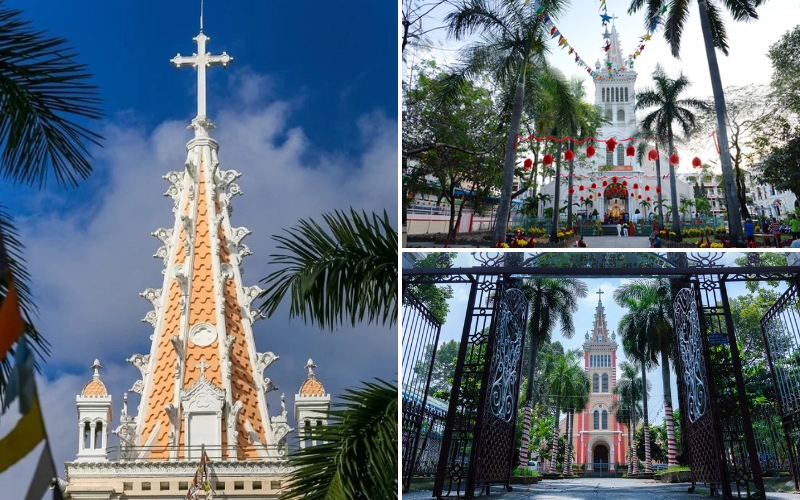
The Gothic architecture of the church from outside
Inside
As you enter the main gate, you will be overwhelmed by the magnificent and lavish beauty of the church. The tall pillars arranged in two straight lines add depth to the main aisle and reinforce the sense of length and width inside the building. The church consists of four large pews and two small pews. In the middle nave is a sculpture of Jesus on the cross, flanked by the altars of the Virgin Mary and St. Joseph. There are also many small sculptures of Catholic Christ inside the church.
The colours used inside Cho Quan Church are a combination of the white of the vaulted ceiling, the bright yellow of the pillars and the brown of the furniture. The windows of Cho Quan Church are not the colorful stained glass windows found in most Catholic churches in the area, but rather horizontal glass windows that allow as much natural light as possible to enter the interior. All these details combine harmoniously to create a solemn and sparkling beauty for Cho Quan Church.
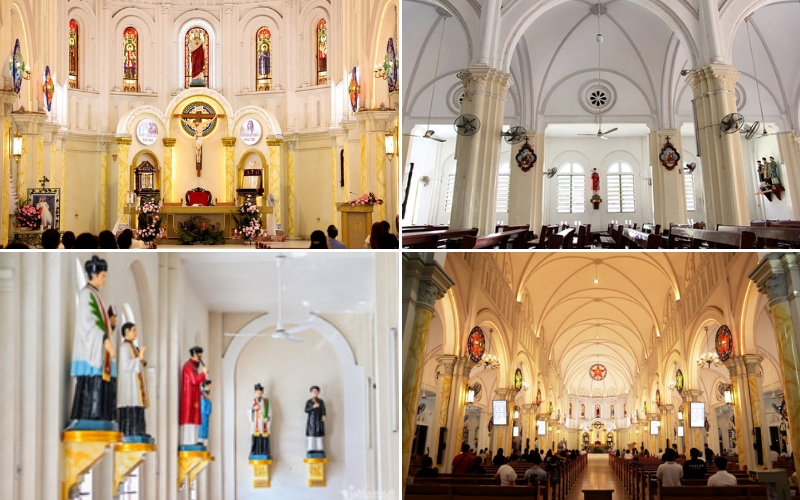
Inside Cho Quan Church
Things to do in and around Cho Quan Church
Participate in Catholic Mass and holidays
During Catholic holidays such as Christmas and Easter, Cho Quan Church is decorated with many sparkling and colorful lights along the main aisle. Visit this church after sunset and you’ll be amazed by the sparkle. You can experience the unfolding of a Catholic ceremony.

A solemn prayer session at the church
Take great photos
Cho Quan Church is definitely a great place to visit when you visit District 5, Ho Chi Minh City. The tranquility of the setting and the yellow walls of Cho Quan Church will allow you to take the most beautiful photos that you can show your friends and family back home. Additionally, you can choose to take photos of the crowded streets and locals’ daily lives outside the church. This will be a wonderful way to experience Ho Chi Minh City.
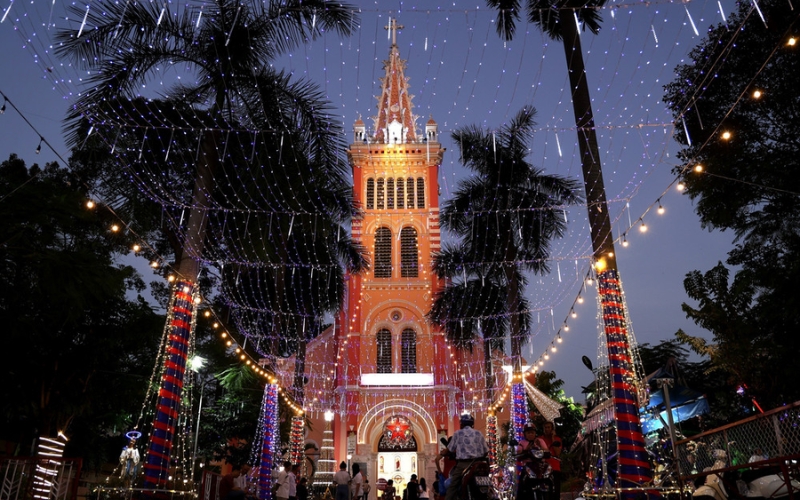
The church is decorated with colorful lights during main festivals
Visit the neighborhood
The Quan Parish includes not only the Cho Quan Church but also other sites such as the Tu Duc Monastery and the Cho Quan Cloister of the Congregation of the Lovers of the Holy Cross. To learn more about the Cho Quan Parish in particular and Catholicism in general, these places are perfect for you.
Additionally, you can visit other religious buildings, especially in Chinatown, which will allow you to learn more about Ho Chi Minh City’s Chinese community. Some suggestions include Saint Joan of Arc Church, Jade Emperor Pagoda, and Quan Am Pagoda.
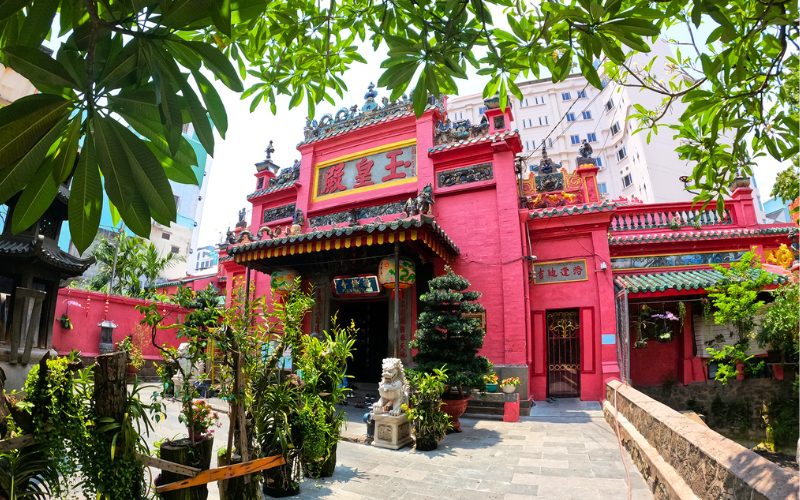
A View of Jade Emperor Pagoda
Discover the local cuisine
To describe Ho Chi Minh City, visitors and locals alike have a quote: “Eat in District 5, sleep in District 3, play in District 1, get robbed in District 4.” District 5 is where you can best sample Vietnamese and Chinese cuisine, especially in Chinatown. Mouthwatering specialities await you: popiah, sweet soybean paste, mixed rice paper, meatball bun, meatballs, and more.
Some iconic dishes you must try in Ho Chi Minh City
> > > Ho Chi Minh City’s street food scene is full of exciting flavors waiting to be discovered. From sizzling snacks in hidden alleys to must-try dishes in Chinatown, there’s always something new to taste. Explore more and dive into Saigon’s best street food here!
Practical tips for visiting the church
Visiting a religious site is a privilege, and approaching it with reverence and open-mindedness will make your experience more meaningful. So follow these guidelines:
- Dress respectfully: Cho Quan Church is a religious site, so it’s appropriate to dress modestly out of respect. Avoid wearing revealing clothing and consider covering your shoulders and knees.
- Taking pictures: Although photography is often permitted, it is polite to ask permission before taking pictures inside the church. Some areas may be off-limits to photography.
- Maintain silence and respect: inside the church, behave respectfully. Do not make noise and be careful with your gestures as a sign of respect for the religious setting.
- Respect the congregation: If a service or worship service is in progress, be respectful and avoid disrupting it. You will be able to observe from a distance without disrupting the flow of the ceremony.
With its historical significance and architectural charm, Cho Quan Church is a captivating destination in Ho Chi Minh City. Discover the blend of tradition and modernity within its walls. Contact us for more ideas to enrich your trip and explore the enchanting allure of Cho Quan Church and other must-see destinations in the city.
Read more:

